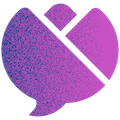Voor een klantbelevingsworkshop die ik geef, heb ik materialen ontworpen en laten drukken. Als ik de envelop met drukwerk ontvang, mist 75% van de bestelling.
Gelukkig was ik ruim op tijd met bestellen en had ik de materialen niet direct nodig. Bellen lukt me niet tijdens openingstijden, want ik neem die dag deel aan de jaarlijkse vossenjacht. Om het plaatje voor de beelddenkers compleet te maken: ik ben verkleed als oranje-supporter.
Dus ik stuur een berichtje naar deze printgigant. Ik vermeld exact de informatie waarvan ik vermoed dat de servicemedewerker die nodig heeft. Het ordernummer, datgene wat wél bezorgd is – mijn document met de naam Hand-out, precies zoals dit in de bevestigingsmail staat – en dat de andere drie onderdelen ontbreken.
Geheel in het oranje uitgedost, loop ik ondertussen in de stad. Ik check mijn mail en lees:
‘Beste,
Wat vervelend dat het mis gegaan is met de levering van uw bestelling. De hand-out heeft u dus wel, maar het losbladige artikel en de stickers ontbreken? Wanneer wij dit duidelijk hebben dan kunnen wij kijken naar een passende oplossing.
Met vriendelijke groet,
Madelon’
Ehm, ja. Dit is een gevalletje copy-paste zonder goed te lezen. Want ik heb al aangegeven dat alleen de hand-out is geleverd. En blijkbaar is het te veel moeite om me aan te schrijven met mijn naam. Niet herkend en zeker niet erkend. Ik antwoord snel terug dat dit inderdaad klopt. Om de volgende mail terug te krijgen:
‘Beste,
Helemaal goed ik het het in het systeem gezet voor u.’
Huh?! En nu? Wat een slordige nikszeggende mail, ook nog met een typefout. Ze heeft het vast in het systeem gezet, maar wat betekent dat voor mij? Voor de ondernemer die deze materialen nodig heeft om CX-les te geven?
Dit is dus waar het vaak misgaat. Voor Madelon is het waarschijnlijk klip en klaar, maar voor mij – de klant – is het nu onduidelijk. Is mijn opdracht naar de printer? Krijg ik mijn materialen? En wanneer? Ik stuur er een kort berichtje op de chat achteraan, waarop een collega vriendelijk antwoordt dat de materialen geprint worden.
De vossenjacht was top. Net ontdaan van oranje schmink, zitten we na te genieten tijdens de vrijdagmiddagborrel. Dan ontvang ik om 18:41 uur de kers-op-de-taart-mail.
‘Beste heer/mevrouw,
Vanwege een te grote drukte is het ons helaas niet gelukt om uw bestelling vandaag te versturen.
Door: Systeem’
Wat?! Dit systeem is stuk! Zoals zoveel systemen. Als klant heb ik er de balen van. Het doet me denken aan een video van Little Britain, die ik gratis voor jullie vertaal: ‘Systeem zegt NEE.’
Het is klaar: klant zegt NEE. Ik ga op zoek naar een andere drukker.
Dit blog werd geschreven voor CustomerFirst en gepubliceerd op 2 mei 2023
Geen blog meer missen? Schrijf je in voor mijn maandelijkse CX Greetz!
*****
Nienke Bloem is often called the Customer Experience speaker in the blue dress.
She’s a global CX thought leader, educator and a global keynote speaker who inspires audiences with best practices and proven methodologies. She leads a speaking practice, a CX game company and a training business; she breathes Customer Experiences and is author of two CX books.
Her two-day Customer Experience Masterclass is known as the best program to prepare for your CCXP and she is the go-to person voor CX leaders who want to advance their leadership and bring direct results from their Customer Experience transformation programs. Since 2020, she hosts a CX Leadership Masterminds program and helps leaders spice up their leadership and deliver an engaging CX Story including a solid CX Strategy. Besides, she is a modern-day pilgrim and found the parallel with leading customer centric transformations.
With her over 20 years corporate experience, she speaks the business language. Her keynotes and education programs in Customer Experience are inspiring and hands-on. She is one of the few Recognized Training Partners of the CXPA and it is her mission to Make Customer Experience Work and help you deliver business results.
